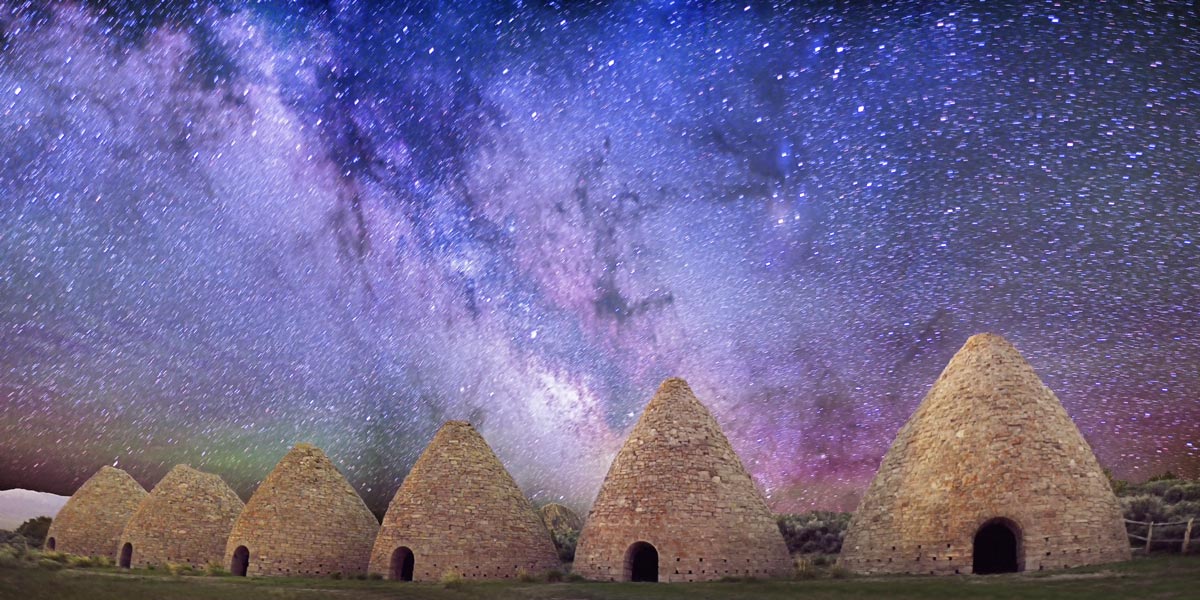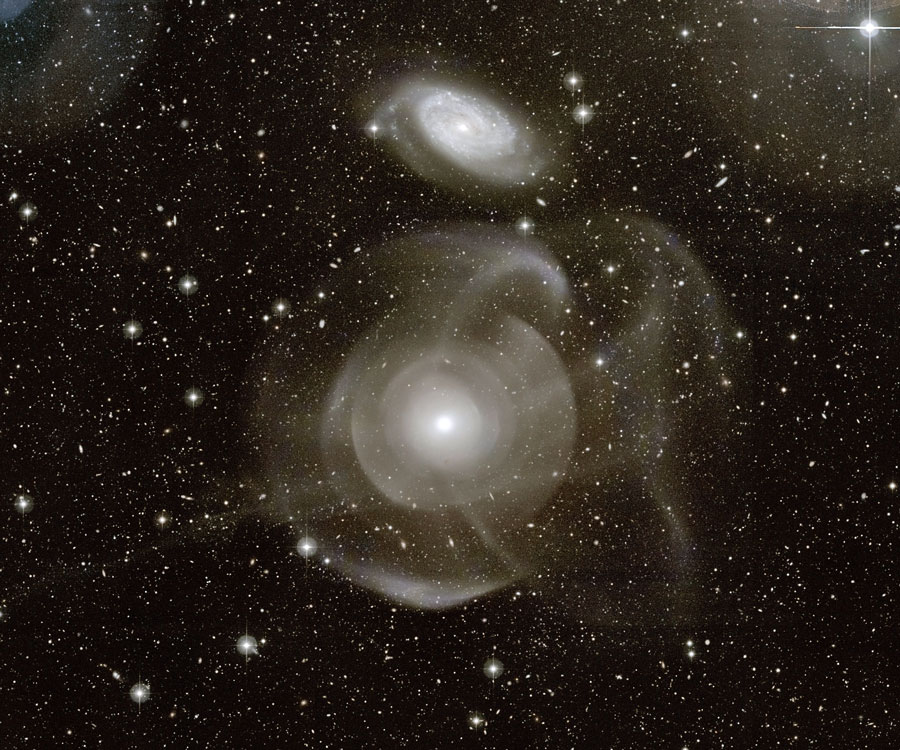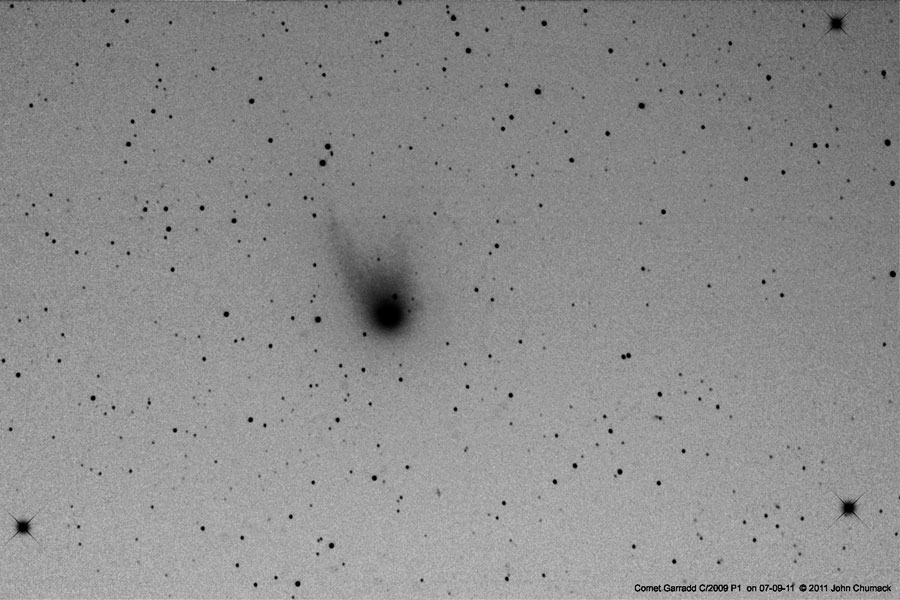_______________________________________________________________
Please vote for the TWO best Astronomy Pictures of the Day (image and text) of July 24-30, 2011.
(Repeated APODs are not included in the poll.)
All titles are clickable and link to the original APOD page.
We ask for your help in choosing an APOW as this helps Jerry and Robert create "year in APOD images" review lectures, create APOM and APOY polls that can be used to create a free PDF calendar at year's end, and provides feedback on which images and APODs were relatively well received. You can select two top images for the week.
We are very interested in why you selected the APODs you voted for, and enthusiastically welcome your telling us why by responding to this thread.
Thank you!
_______________________________________________________________
<- Previous week's poll
What's that below the Milky Way? Historic kilns. Built in the 1870s in rural Nevada, USA to process local wood into charcoal, the kilns were soon abandon due to a town fire and flooding, but remain in good condition even today. The above panorama is a digital conglomerate of five separate images taken in early June from the same location. Visible above the unusual kilns is a colorful star field, highlighted by the central band of our Milky Way Galaxy appearing along a diagonal toward the lower right. Many famous sites in our Galaxy are visible, including the Pipe Nebula and the Dark River to Antares, seen to the right of the Milky Way. The origin of the green mist on the lower left, however, is currently unexplained.
What's happening to galaxy NGC 474? The multiple layers of emission appear strangely complex and unexpected given the relatively featureless appearance of the elliptical galaxy in less deep images. The cause of the shells is currently unknown, but possibly tidal tails related to debris left over from absorbing numerous small galaxies in the past billion years. Alternatively the shells may be like ripples in a pond, where the ongoing collision with the spiral galaxy just above NGC 474 is causing density waves to ripple though the galactic giant. Regardless of the actual cause, the above image dramatically highlights the increasing consensus that at least some elliptical galaxies have formed in the recent past, and that the outer halos of most large galaxies are not really smooth but have complexities induced by frequent interactions with -- and accretions of -- smaller nearby galaxies. The halo of our own Milky Way Galaxy is one example of such unexpected complexity. NGC 474 spans about 250,000 light years and lies about 100 million light years distant toward the constellation of the Fish (Pisces).
Another large snowball is falling toward the Sun. Comet Garradd was discovered two years ago by Gordon Garradd in Australia, and is currently visible through a small telescope at visual magnitude nine. Officially designated C/2009 P1 (Garradd), the comet will likely continue to brighten, with recent projections placing it at peak magnitude six or seven in February 2012, just below naked eye visibility. Comet Garradd is already showing a short tail and is seen as the elongated fuzzy patch in the above negative image recorded earlier this month from Yellow Springs, Ohio, USA. Other comets are also currently falling into the inner Solar System and brightening as well, including C/2010 X1 (Elenin), expected to peak near magnitude six in early September, 45P/Honda-Mrkos-Pajdusakova expected to peak brighten past magnitude eight in mid-August, and C/2011 L4 (PANSTARRS) which may become visible to the unaided eye during the early months of 2013.
Fantastic shapes lurk in clouds of glowing hydrogen gas in NGC 6188. The emission nebula is found near the edge of a large molecular cloud, unseen at visible wavelengths, in the southern constellation Ara, about 4,000 light-years away. Massive, young stars of the embedded Ara OB1 association were formed in that region only a few million years ago, sculpting the dark shapes and powering the nebular glow with stellar winds and intense ultraviolet radiation. The recent star formation itself was likely triggered by winds and supernova explosions, from previous generations of massive stars, that swept up and compressed the molecular gas. Joining NGC 6188 on this cosmic canvas is rare emission nebula NGC 6164, also created by one of the region's massive O-type stars. Similar in appearance to many planetary nebulae, NGC 6164's striking, symmetric gaseous shroud and faint halo surround its bright central star at the upper right. The field of view spans about two full Moons, corresponding to 70 light years at the estimated distance of NGC 6188.
This sharp view from the Thermal Emission Imaging System camera on NASA's Mars Odyssey orbiter is centered on 154 kilometer (96 mile) wide Gale crater, near the martian equator. Within Gale, an impressive layered mountain rises about 5 kilometers (3 miles) above the crater floor. Layers and structures near its base are thought to have been formed in ancient times by water-carried sediments. In fact, a spot near the crater's northern side at the foot of the mountain has now been chosen as the target for the Mars Science Laboratory mission. Scheduled for launch late this year, the mission will land Mars' next visitor from planet Earth in August of 2012, lowering the car-sized Curiosity rover to the martian surface with a hovering, rocket-powered skycrane. Curiosity's science instruments are intended to discover if Gale once had favorable environmental conditions for supporting microbial life and for preserving clues about whether life ever existed on the Red Planet.
A quest to find planet Earth's darkest night skies led to this intriguing panorama. In projection, the mosaic view sandwiches the horizons visible in all-sky images taken from the northern hemisphere's Canary Island of La Palma (top) and the south's high Atacama Desert between the two hemispheres of the Milky Way Galaxy. The photographers' choice of locations offered locally dark skies enjoyed by La Palma's Roque de los Muchachos Observatory and Paranal Observatory in Chile. But it also allowed the directions to the Milky Way's north and south galactic poles to be placed near the local zenith. That constrained the faint, diffuse glow of the plane of the Milky Way to the mountainous horizons. As a result, an even fainter S-shaped band of light, sunlight scattered by dust along the solar system's ecliptic plane, can be completely traced through both northern and southern hemisphere night skies.
<- Previous week's poll
Poll: Astronomy Picture of the Week for 2011 July 24-30
Poll: Astronomy Picture of the Week for 2011 July 24-30
A closed mouth gathers no foot.





